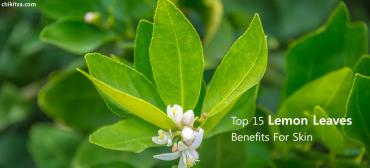How To Use Coconut Oil For Athletes' Foot?

What Is An Athlete's Foot?
Athlete's foot, also known as tinea pedis, is a fungal infection that usually affects the space between the toes. It is commonly seen in people whose feet become sweaty because of tight-fitting footwear. Though common on the skin of feet, it can spread to the toenails and hands. The condition is most often seen in athletes. can occur in people of all ages and is not so serious. You can get rid of an athlete's foot easily with a few home remedies. Coconut oil for athletes is the simplest home remedy that works best. Here in this article, you can know the tips to use coconut oil for an athlete's foot.
Athlete's Foot Symptoms
Athlete's foot can occur in one or both feet and symptoms include;
- Scaly, itchy red rashes, and burning between your toes or on soles of your feet
- Small, itchy red blisters on your feet
- Peeling and cracked skin on your feet, most commonly between your toes and on your soles
- Dryness and scaling of the skin on your soles or sides of your feet
- Red sores or ulcers that smell bad and leak fluid
Toenails that are thick, discolored, and crumbly; and pulled away from the nail bed.
What Causes An Athlete's Foot?
Athlete's foot is caused by a variety of fungi that belong to a group called dermatophytes, which also cause ringworm and jock itch. The fungus thrives in closed, dark, warm, and moist environments such as shoes, and feeds on a protein called keratin found in the hair, nails, and skin. The athlete's foot can also be caused by a yeast called candida, which is a non-dermatophyte, but this is rarely seen.
These fungi normally exist on skin harmlessly, if the skin is clean and dry, with limited growth. However, under warm and damp conditions, they multiply rapidly. Tight shoes trigger an athlete's foot because they bring the toes together, creating ideal conditions for the fungus to thrive. Studies have shown that wearing plastic shoes that warm and moisten the feet commonly results in an athlete's foot than those made from leather or canvas. Damp socks and warm feet present a greater risk for this fungal infection.
The athlete's foot is also found to commonly spread around swimming pools and communal showers because these areas are usually humid and warm.
People with a weakened immune system or diabetes having sores or cuts on their feet are at a greater risk of developing an athlete's foot.
Is Athlete's Foot Contagious?
Yes! Athlete's foot is a contagious infection. It can be spread directly when an individual touches the affected area of the infected person that is skin-to-skin contact, or indirectly from infected people through contact with contaminated surfaces, clothes, shoes, socks, and towels. Walking barefoot on the same surface as an infected person also increases the chance of contracting an athlete's foot.
A wet floor surface like a swimming pool area, bathroom, locker room, shower can be an excellent breeding ground for the fungal organism. If your bare foot contacts any of these wet floor surfaces, the fungus gets onto your skin. If your skin is warm and damp, the fungus grows to cause the athlete's foot.
The infection can be easily transmitted to other parts of the body when you touch the infected area and then touch the other parts of the body such as the groin and underarms, the areas that are warm and moist.
How To Use Coconut Oil For Athlete's Feet?
Organic, unrefined coconut oil works best for an athlete's foot because processing and refining using heat or chemicals destroy its antifungal properties. The following are some tips to use coconut oil for athletes.
Usage of coconut oil for athlete's feet;
- Apply the coconut oil directly on the affected area of the feet, massage, and then cover the feet with cotton socks. Clean and dry the area before applying coconut oil. Coconut oil can be applied 1-2 times a day to get good relief. The oil can also be applied after a bath.
- Coconut oil can be mixed with anti-fungal essential oil to provide greater relief. Essential oils that can be used include tea tree, rosemary, lemon, and peppermint oil.
- Coconut Oil With Tea Tree Oil - You can soak the affected foot in a mixture of coconut oil, vinegar, and tea tree oil. The mixture of coconut oil and tea tree oil can be applied to your feet before going to bed. Both oils have anti-fungal properties and help treat the condition effectively.
- Coconut Oil With Oregano Oil - Mix two tablespoons of coconut oil with ten drops of oregano oil. Massage the affected area with this mixture 2-4 times a day. Apply the oil properly between the toes. Use more oil for blending if the infection is intense. Oregano oil also has anti-fungal properties, hence coconut oil with oregano oil provides great relief.
- Coconut Oil With Lavender Oil - These two oils together work best to treat an athlete's foot. Mix a teaspoon of coconut oil with 3-5 drops of lavender oil and apply it to the affected area. This mixture can be applied 2-3 times a day.
Studies show that people using coconut oil in their diet are less prone to fungal infections. Coconut oil for an athlete's foot is an excellent home remedy that treats and heals the condition.
[Also Read: Coconut oil for itchy scalp]
How To Get Rid Of Athlete's Foot?
There are numerous options to treat an athlete's foot, be it athlete foot on toes or athlete's foot on the heel;
- Athlete's foot can be treated with over-the-counter anti-fungal products and basic foot hygiene.
- Wash and dry your feet regularly including the space between the toes
- Make sure to change your socks or stockings every day.
- Do not wear the same shoes every day as this helps the shoes to dry completely before wearing them again.
- Apply an anti-fungal cream or sprinkle an antifungal powder on your feet and in your shoes every day. Anti-fungal creams and sprays help to treat and manage the infection. This treatment must be continued for one to two weeks after the infection has subsided to prevent the recurrence of infection.
- Make sure your feet get adequate air. If you cannot walk barefoot or wear sandals, you can wear socks that will not absorb moisture. Most of the time, an athlete's foot go away with over-the-counter treatment. However, more severe cases may require a doctor visit.
Many home remedies are helpful in killing the fungus that causes athlete's foot. These include;
1. Tea tree oil
Mix a few drops of tea tree oil with a carrier oil, such as coconut or olive oil, and rub it on the infected area of the feet. Studies report that tea tree oil is very effective in killing fungal cells among several other antifungal agents.
[Also Read: Tea tree oil for toothache]
2. Coconut oil
An athlete's foot can be naturally treated using coconut oil which is an effective antifungal agent. Coconut oil contains lauric acid and caprylic acid that disrupt the growth of fungus and kill the fungal cells. Coconut oil provides great relief as it helps moisturize the feet and reduces the redness that develops in an athlete's foot.
3. Garlic
Add 3-4 crushed garlic cloves to a tub of warm water and stir them. Soak your feet for about 30 minutes, twice a day for a week. Garlic is known to kill a variety of germs including fungal organisms.
4. Hydrogen peroxide with iodine
Mix iodine solution and hydrogen peroxide in a large bowl or a bucket. Dip your feet in the mixture or apply on the affected area using a cotton pad. Hydrogen peroxide and iodine, both kill germs on the skin, but the combination is found to be more effective.
5. Baking soda (sodium bicarbonate)
Mix a half cup of baking soda in a large tub or bucket of warm water. Soak your affected feet for about 20 minutes, 2 times a day. Once done, dry your feet thoroughly. Studies show baking soda to be effective in treating athlete's foot as it contains anti-fungal properties.
6. Hairdryer and talcum powder
Keeping your feet dry, especially between the toes, will help prevent the infection and growth of fungus. Moisture from the feet can be removed using a hairdryer after a bath. Once the feet are dry, sprinkle talcum powder on the feet to absorb sweat and keep them dry.









